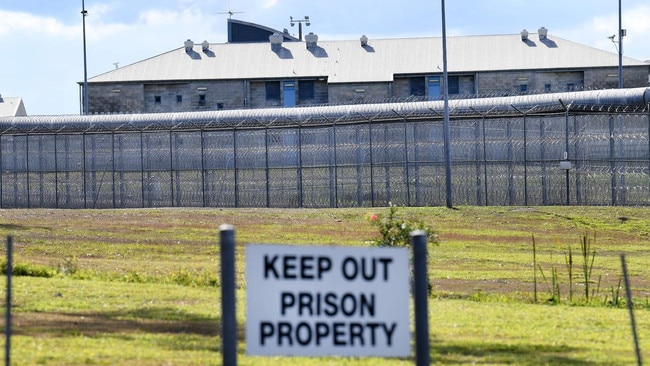Judge finds solitary confinement decision for sadistic killer Michael Owen-D’Arcy unlawful
A sadistic killer who severed and kept his flatmate’s penis as a souvenir claimed to be Queensland’s loneliest prisoner. Now a judge has found keeping him isolated was unlawful.

Police & Courts
Don't miss out on the headlines from Police & Courts. Followed categories will be added to My News.
A judge has found a decision to keep a sadistic killer, who claimed to be Queensland’s loneliest prisoner, in solitary confinement in a maximum security unit was unlawful.
The judge’s finding that there was a breach of the Human Rights Act, could call into question the regimen of solitary confinement in Queensland prisons.
Michael Stephen Owen-D’Arcy, who severed and then kept his flatmate’s penis as a souvenir and bit off the top of a prison warden’s ear, has been kept in a cell on his own since 2013.
Supreme Court Justice Glenn Martin found a maximum security order decision last year, for a further six months, was not compatible with his human rights.
The judge also found a “no association” decision last year, leaving Owen-D’Arcy in continued solitary confinement, was unlawful, as it also breached a section of the Human Rights Act.
Owen-D’Arcy, who severed and then kept his flatmate’s penis as a souvenir and who bit off the top of a prison warden’s ear, pleaded to be allowed a cellmate, claiming he was Queensland’s loneliest prisoner.
Prison authorities had argued that Owen-D’Arcy, 40, needed to be kept away from other prisoners and jail staff because he was a high risk of killing or seriously injuring other prisoners or persons.
Since 2010, Owen-D’Arcy has been serving a life sentence for murder, for butchering his flatmate David John Easton, a nurse, by stabbing him 41 times with a bayonet and three other knives at their Inala home in 2007, then slicing off his penis and testicles.
Easton’s testicles were found in the kitchen sink and his penis was found wrapped in cling film and placed inside a salt container.

After the attack, Owen-D’Arcy took photos of Easton’s body posing with a children’s book, on his chest and bandaids over his eyes with eyes drawn on them in whiteboard marker.
In 2013, he bit off the top of a prison guard’s ear and in 2011 he headbutted and punched a prison officer.
A maximum security order for Owen-D’Arcy was issued in 2013 and a new order has been issued every six months since then.
Corrective Services executive director Samantha Newman also made another “no association decision’’ last year, barring contact with other prisoners in maximum security without approval.
Justice Martin found Ms Newman failed to take into account the effect of the no association decision on Owen-D’Arcy’s human rights.
Owen-D’Arcy said he lived alone in a cell that was 2.2 metres by 3.8 metres and when moved outside he was in handcuffs secured to a body belt and in leg irons.
Section 30 of the Human Rights Act says all persons deprived of liberty must be treated with humanity and with respect for the inherent dignity of the human person.
“The no association decision is as much a part of solitary confinement or segregation as the MSO,’’ Justice Martin said.
“It is not a physical isolation, but it works to prevent (Owen-D’Arcy) from engaging in any meaningful conversations or exchanges.
“It places him in a cocoon of isolation from all but the slightest interaction with other human beings.’’
Justice Martin said Ms Newman did not appear to have given enough weight to the fact that her decision extended a period of solitary confinement that had begun in 2013.
Lawyers for the prisoner, Chief Executive of Queensland Corrective Services, Attorney-General and Queensland Human Rights Commission have until November 5 to make submissions about appropriate orders.



